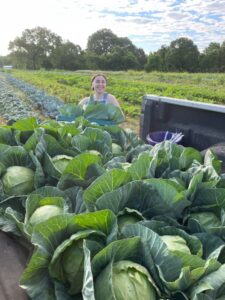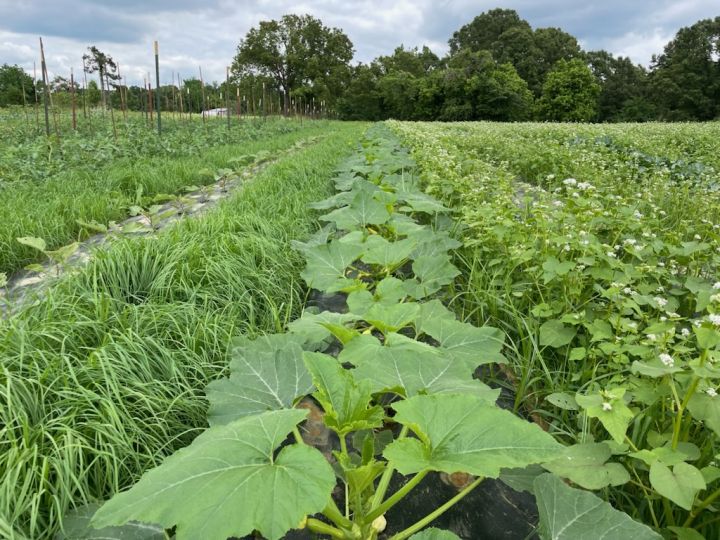Meet Our Team

Meet Anna. This is Anna’s fourth season working on the farm. She has just completed a course of study in economics at the University of Mississippi in Oxford. Congratulations, Anna! Anna has been with us through a lot. She started back when we were using the old, tiny, open air wash/pack station, where we packed custom orders together during the early days of COVID. Anna is our champion tomato trelliser. She easily outpaces me trellising the field tomatoes. She is a pleasure to work with. We are grateful to have Anna as a part of our team.
Living Mulch
It is almost time to mow the living mulch in the first planting of tomatoes, squash and okra. Living mulch is planted in the pathways between crops. Keeping pathways clear of weeds is a challenge! Some farmers use tractors to cultivate their pathways and kill weeds when they are small. We plant teff grass in the tomatoes and buckwheat in the squash and okra. We love living mulch because you get the benefits of mulch and the benfits of an extra cover crop. And even with the maintenance of mowing, it is still less work than spreading straw mulch.
By filling the space with plants we do want (cover crop), there is less room for plants we don’t want (weeds). Living mulch helps rain water infiltrate and helps hold moisture in the soil. It regulates soil temperature as well, and prevents erosion. Living roots are the urban centers of soil microbes, so living mulch is good for our soil biology, too. The buckwheat in particular attracts pollinators. And ultimately it gets tilled in and adds organic matter to the soil. What’s not to love?
Small Shares
- strawberries
- rainbow chard
- red Russian kale
- assorted head lettuce
- napa cabbage
Full Shares
- strawberries
- radishes
- kohlrabi
- rainbow chard
- red Russian kale
- assorted head lettuce
- napa cabbage




You must be logged in to post a comment.